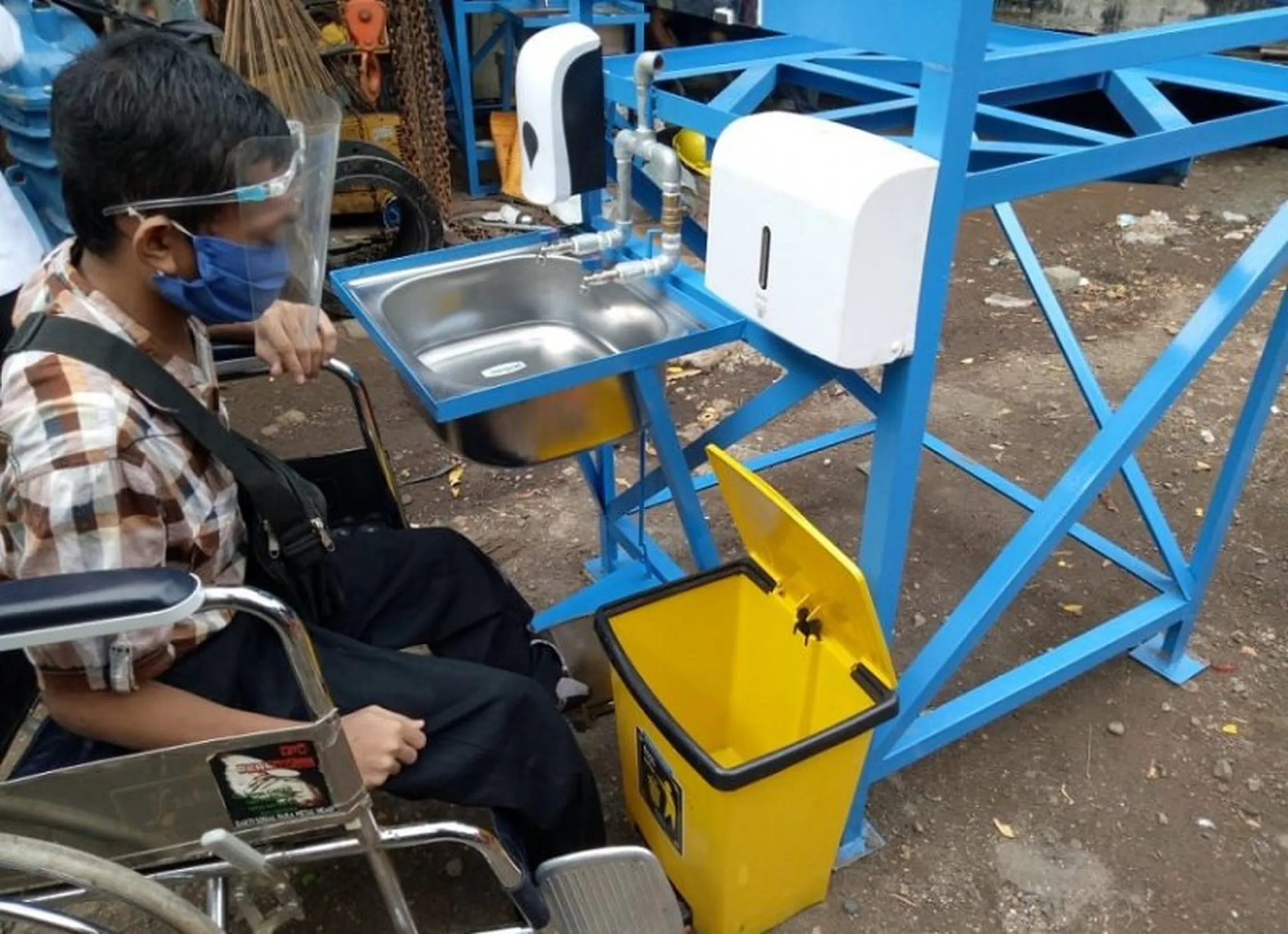Handwashing stations in schools reinvented

Today, selected schools in ten districts in Java and West Nusa Tenggara (NTB) have handwashing stations situated in front of the schools’ entrance. These handwashing stations were delivered as part of Unilever and FCDO’s COVID-19 project, HBCC. When schools re-open in July 2021, the school-going population, their guardians, and passers-by will now have the possibility to wash their hands with soap.
In many public schools in Indonesia, it is the norm to install handwashing stations inside of or next to toilets within school premises. Many are maintained poorly or are for the exclusive use of the school-going population. In a country where less than 50% of the population older than 10 years practise hand hygiene,[1] additionally situating handwashing stations in front of the school’s entrance boosts accessibility and inclusivity. Their location offers handwashing facilities with running water to school-going children (and administrators), but also to the larger public; including people with disabilities, older people, and young children.
Contours of an inclusive handwashing station
Beyond the criterion of location for accessibility, what does an inclusive handwashing station look like in Indonesia?
In response to the pandemic, the Ministry of Health released a Handwashing with Soap Guidance last year (2020) to outline the required features of a proper handwashing station. These include:
guaranteed access to water and any type of soap;
fitting facility with a foot-operated pedal or handle to release water from the tap to avoid cross-contamination;
a 75 cm-high station in an accessible location;
the distribution of information materials on proper hand hygiene; and
regular maintenance of facility (and monitoring).
Within a span of ten months, over a hundred public handwashing stations had been delivered by SNV in Indonesia in Java and West Nusa Tenggara (NTB). For SNV, installation of our handwashing stations did not only seek to meet government’s ‘required checklist.’ Our long history of implementing behavioural change communications (BCC) has taught us that it is not only about delivering facilities. It is also about planning and talking with a wide range of people because no one person can possibly have the solution for all.

Handwashing station being tested for wheelchair accessibility
SNV BCC in practice in HBCC implementation areas
During the design process, our team of SNV, local government, facility and key WASH stakeholders coordinated and planned with representatives of Disabled People’s Organisations. Their experiences and wisdoms were key in defining and testing the accessibility features of our handwashing stations.
To encourage people to wash their hands and draw their attention to the presence of new stations, we developed ‘nudges’ and created information materials on how to wash hands properly. Part of this process has been the development and release of the Tanggapcovid handwashing info page in Bahasa Indonesia.
Throughout the project, local government authorities were involved. Key public locations and schools were selected with our local government partners. We shared our approach and methodology pointing them in the direction of owning and leading in planning and costing for operations and maintenance.
Handwashing for school-going population and the larger public
Clearly, local governments – through schools within their jurisdiction – have been quick to act. Speaking about budget changes set to be implemented in schools, the Head of Karangmojo 2 Primary School in Gunung Kidul District, said, ‘We are committed to allocate € 100 ever year for operations and maintenance to ensure the handwashing stations’ sustainability. This amount will be tapped from schools’ operational budgets.’
The Head of Baran 1 Primary school in Gunung Kidul added, ‘We are providing access to handwashing stations for more students and school personnel, and allocated € 400 to replicate the accessible handwashing stations showcased by SNV.’
Thanks to increased commitment to hand hygiene by decision-makers in local government and schools, students, administrators and personnel will now be greeted by handwashing stations before they enter schools.
For SNV and its partners in government, institutions, and the larger development sector – we believe that providing a proper and accessible handwashing facility is the first step to grow the habit of proper hand hygiene. But to sustain behaviour, we have to do this together. Schools in Java and West Nusa Tenggara are paving the way for sustained hand hygiene to be embedded in behaviour. They’re not simply protecting their students and the school’s population, but they’re also expanding safety protocols by bringing handwashing stations with running water to larger groups so that they too can wash their hands with soap.
For more information on HBCC implementation in Indonesia, contact Saniya Niska